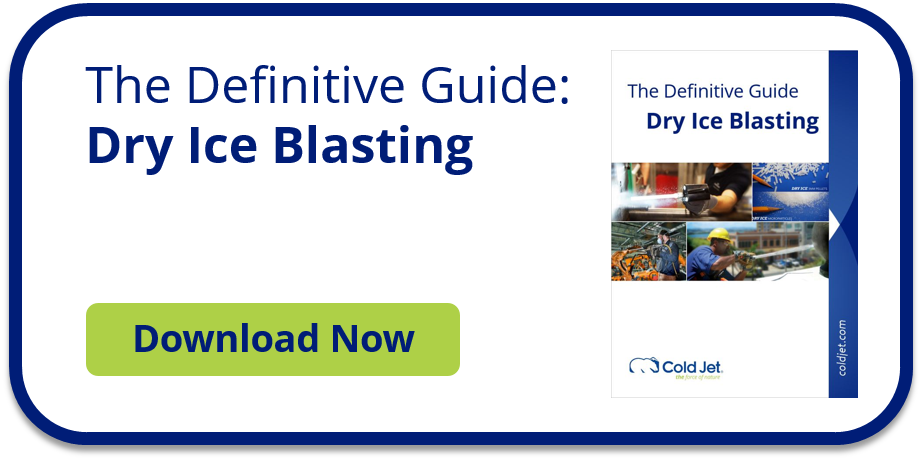Dry Ice Blasting Startup Guide: Essential Equipment and Requirements

What you need to begin dry ice blasting
Dry ice cleaning requires the right combination of equipment, supplies, and training. Understanding your equipment needs is crucial for delivering effective results.
Dry ice blasting requires a simple setup:
- Dry ice blaster
- Compressed air
- Dry ice supply
This guide will walk you through dry ice blasting requirements, provide further insight, and give you tips for a successful cleaning operation.
1) Dry Ice Blasting Machine
Your industrial cleaning and maintenance program begins with a dependable and user-friendly dry ice blasting system.
Cold Jet provides a range of dry ice blasting equipment options for various industrial needs, featuring models with adjustable blast settings, durable stainless steel construction, and robust, heavy-duty frameworks.
Each system comes fully equipped with:
- Applicator
- Air and Blast hoses
- Specialized nozzles for your specific application

2) Compressed Air
You can choose between connecting to an existing stationary installation (plant air) or using a portable air compressor. Air requirements vary by system type.
Dry ice blast cleaning air pressure requirements:
- Dry Ice Pellet systems: 100 cfm (2.8 m³/min) at 80 psi (5.5 bar)
- MicroParticle Dry Ice systems: 30 cfm (0.9 m³/min) at 80 psi (5.5 bar)
- Low-flow nozzle systems: As little as 12 cfm (0.3 m³/min) at 80 psi (5.5 bar)
Note: Your specific air consumption depends on your cleaning application.
Aftercooler for diesel air compressors
Care must be taken when using a portable diesel compressor for dry ice blasting. Diesel compressors produce heated, humid air that can compromise dry ice quality and reduce blasting system effectiveness.
An Aftercooler effectively reduces compressed air temperature to within 15°F (-9.4°C) of ambient conditions while removing moisture from the system.
Learn more about the importance of dry air in dry ice blasting.

3) Electric Power Source
Dry ice blasters typically require a standard 100-240V AC / 50-60Hz electrical power source.
4) Dry Ice Supply
You can purchase dry ice as needed or establish a delivery schedule with a local supplier. Most metropolitan regions have suppliers that provide coverage within a 100 mile radius. If you need dry ice shipped, standard carriers can transport it.
The dry ice will come in specially insulated totes. The minimum dry ice order will vary by supplier, but typically suppliers will deliver 500 lb totes.
Dry ice suppliers include:
- Industrial gas companies
- Welding gas suppliers
- Independent gas companies
- Specialized dry ice manufacturers
Suppliers will vary by market so it is recommended to research and contact dry ice suppliers in your area.
5) Training and Safety
Training
Professional training makes the difference between average and exceptional cleaning operations. Cold Jet provides a comprehensive training course that covers:
- Machine operation basics
- Effective cleaning techniques
- Essential safety guidelines
Learn more safety tips about dry ice and CO2
Personal Protective Equipment (PPE)
Safety is essential in dry ice blasting operations. Operators must always wear appropriate PPE, including:
- Gloves
- Safety glasses or visor
- Hearing protection
Have more questions about dry ice blasting? Check out our Definitive Guide to Dry Ice Blasting!
.png) English
English

